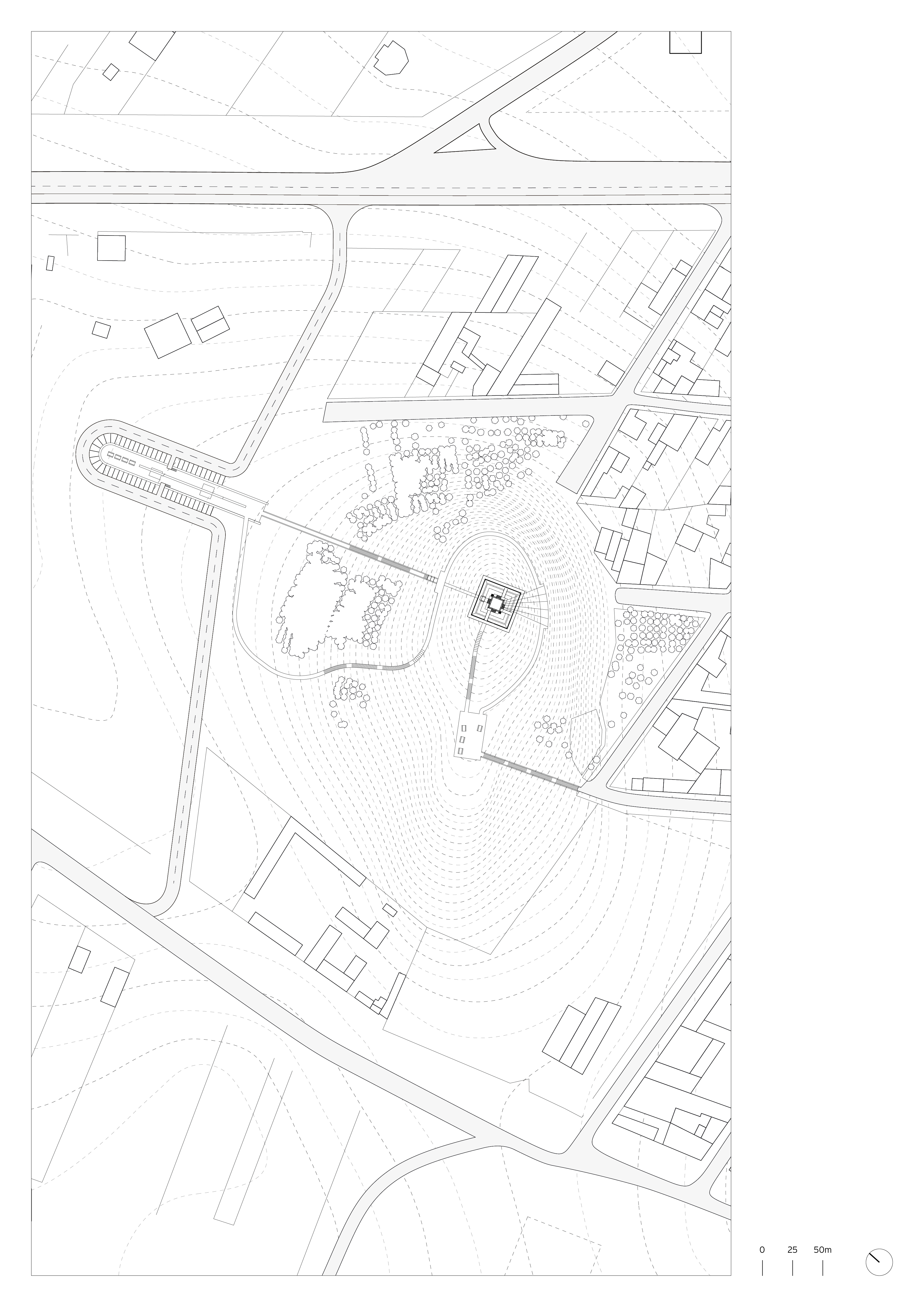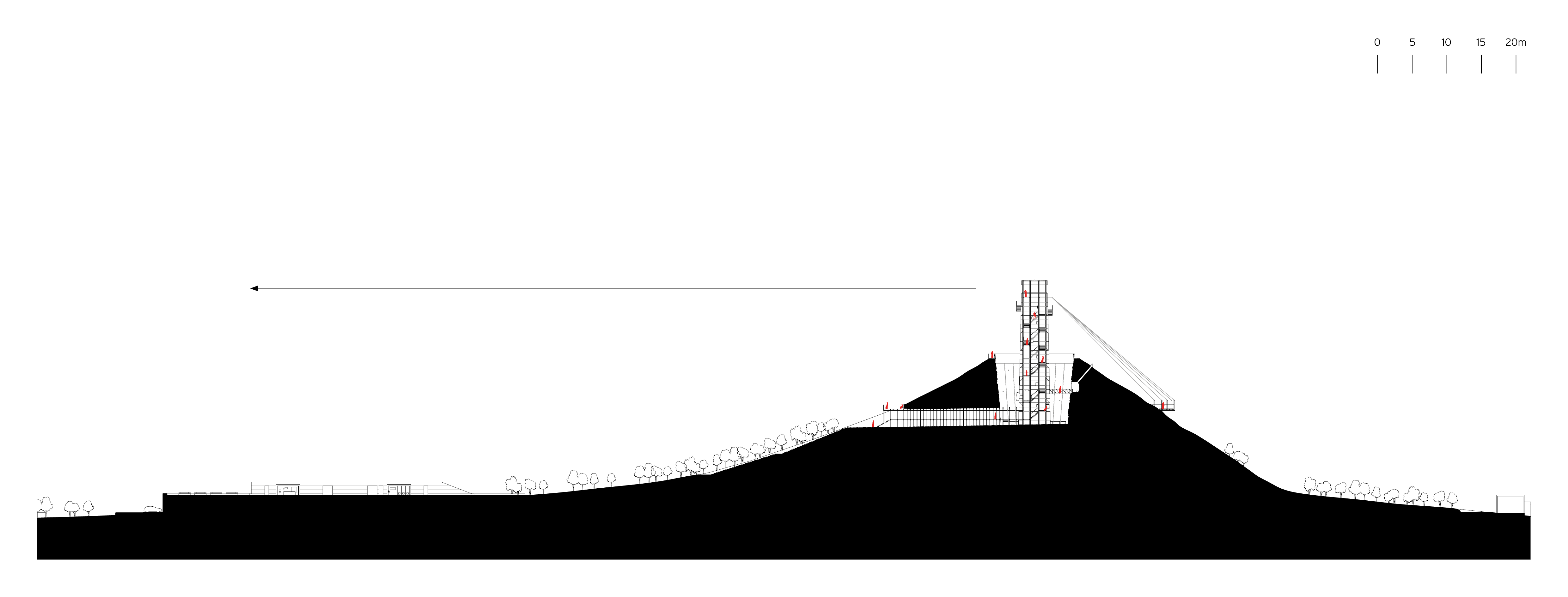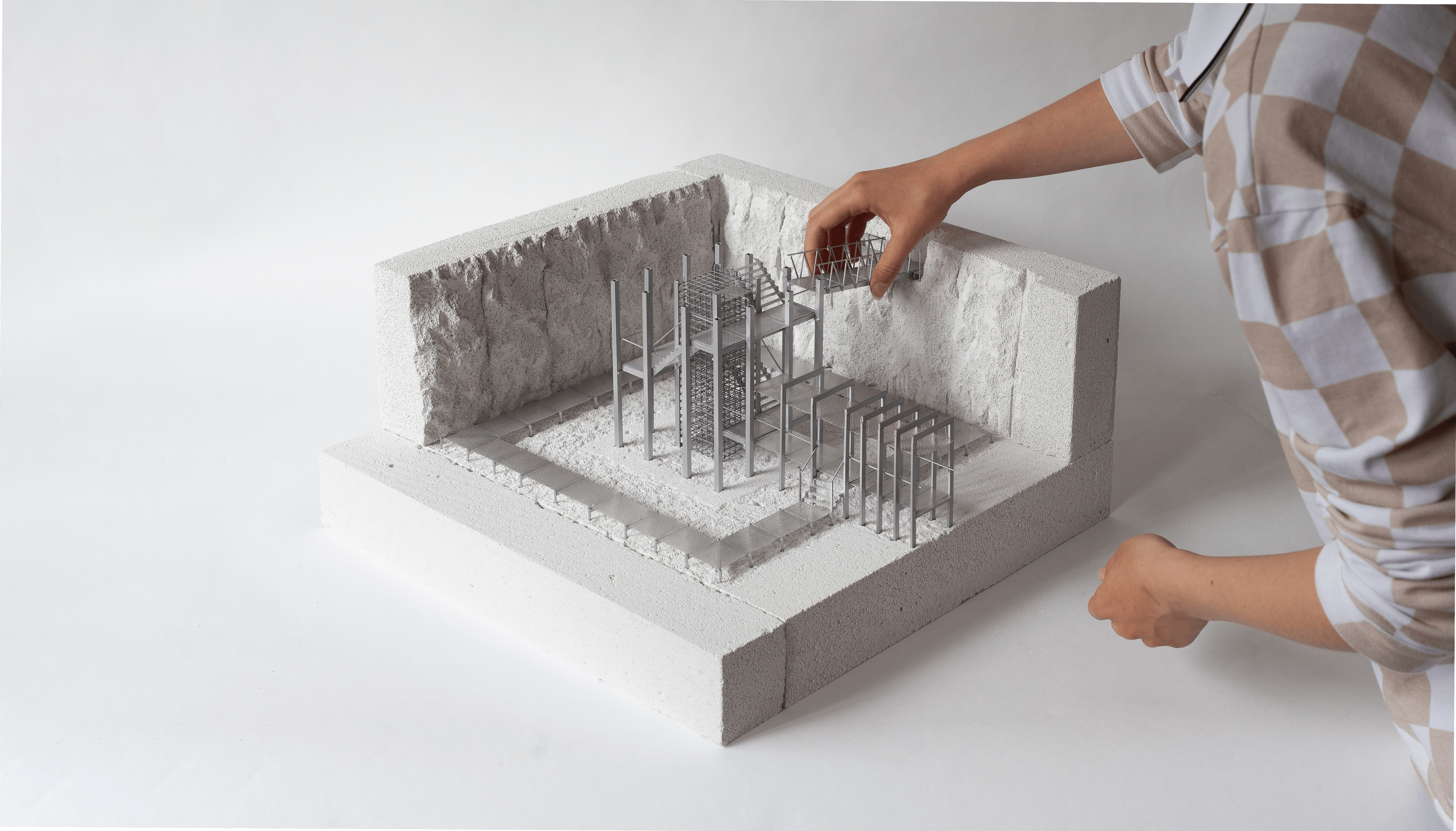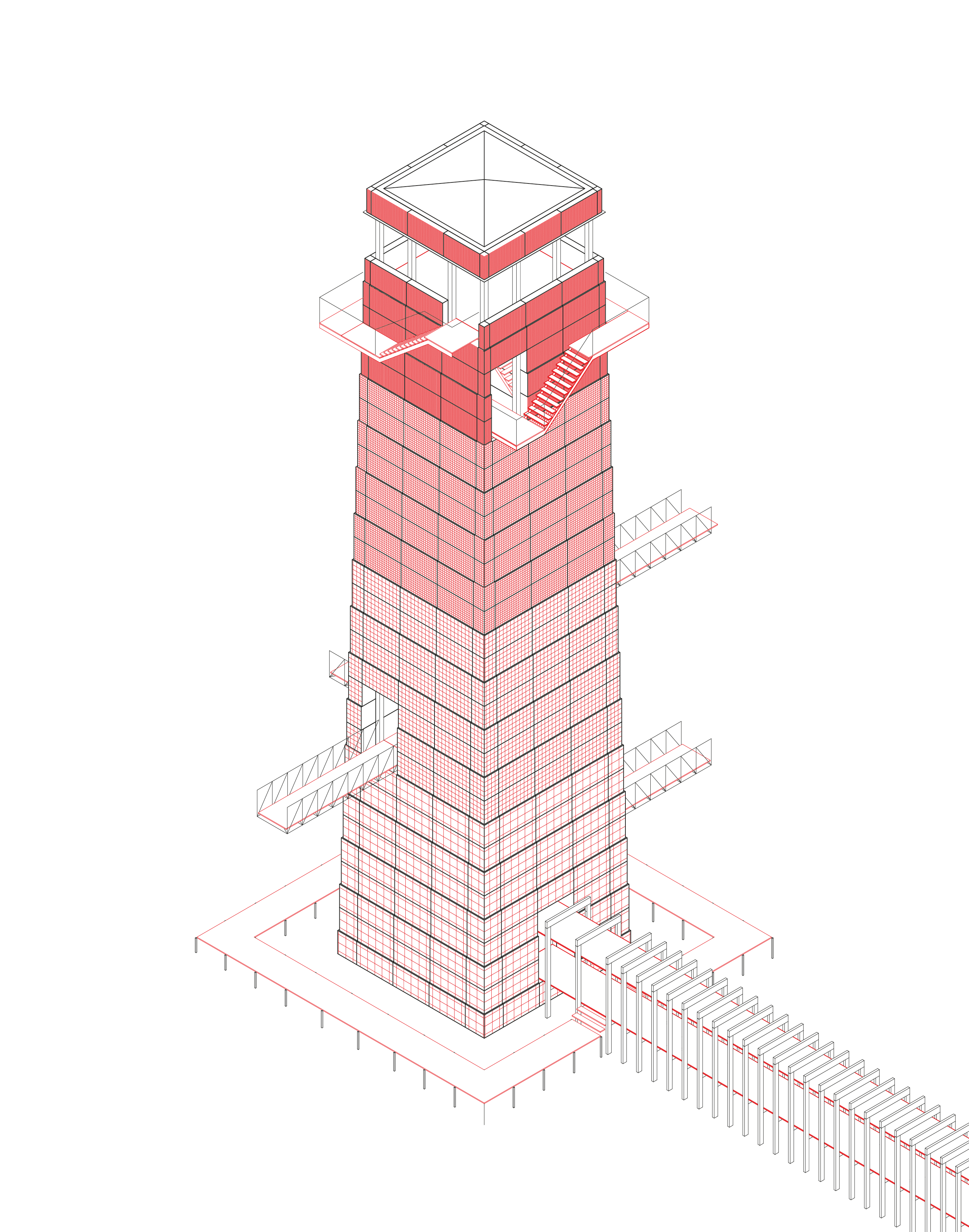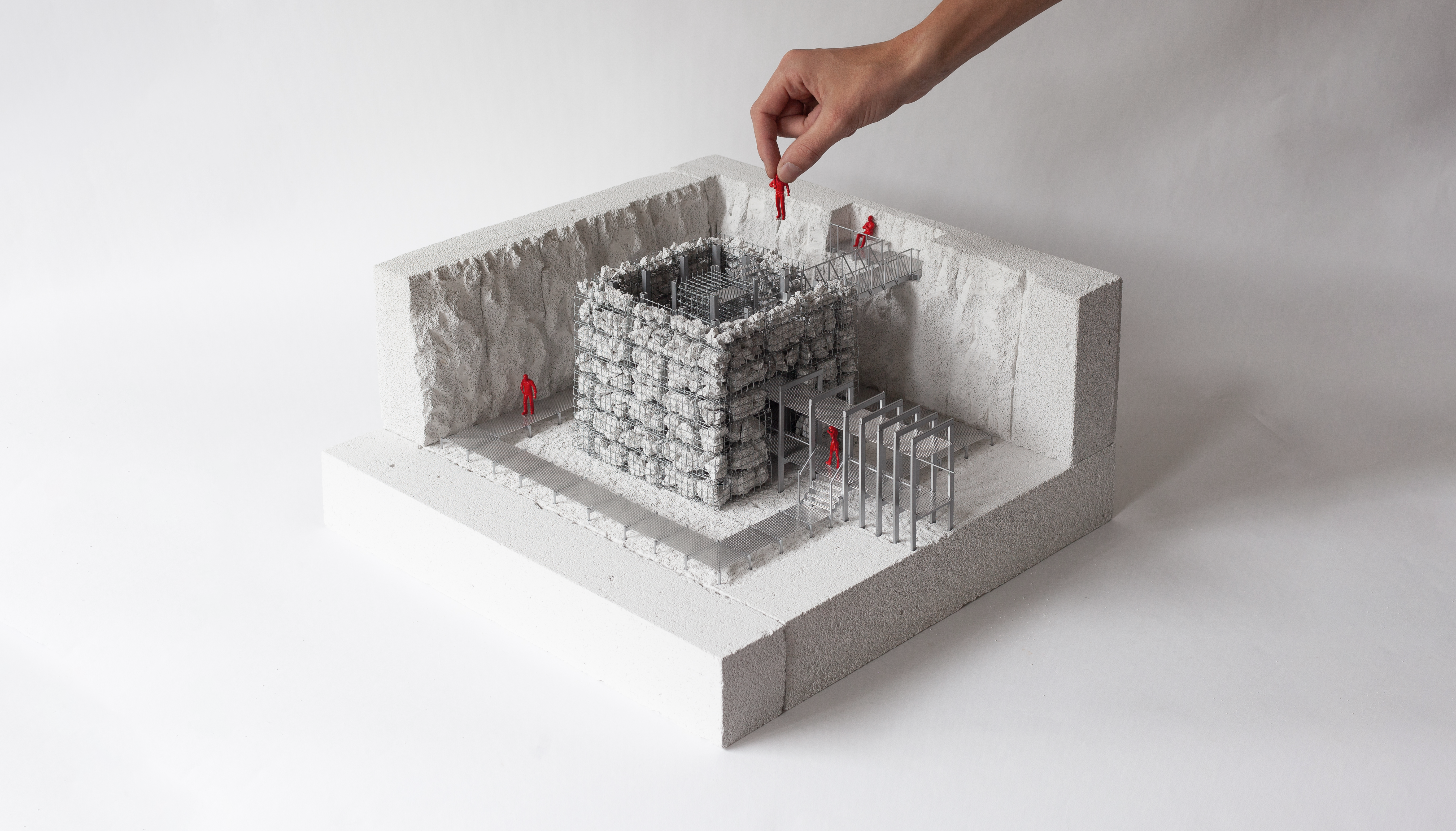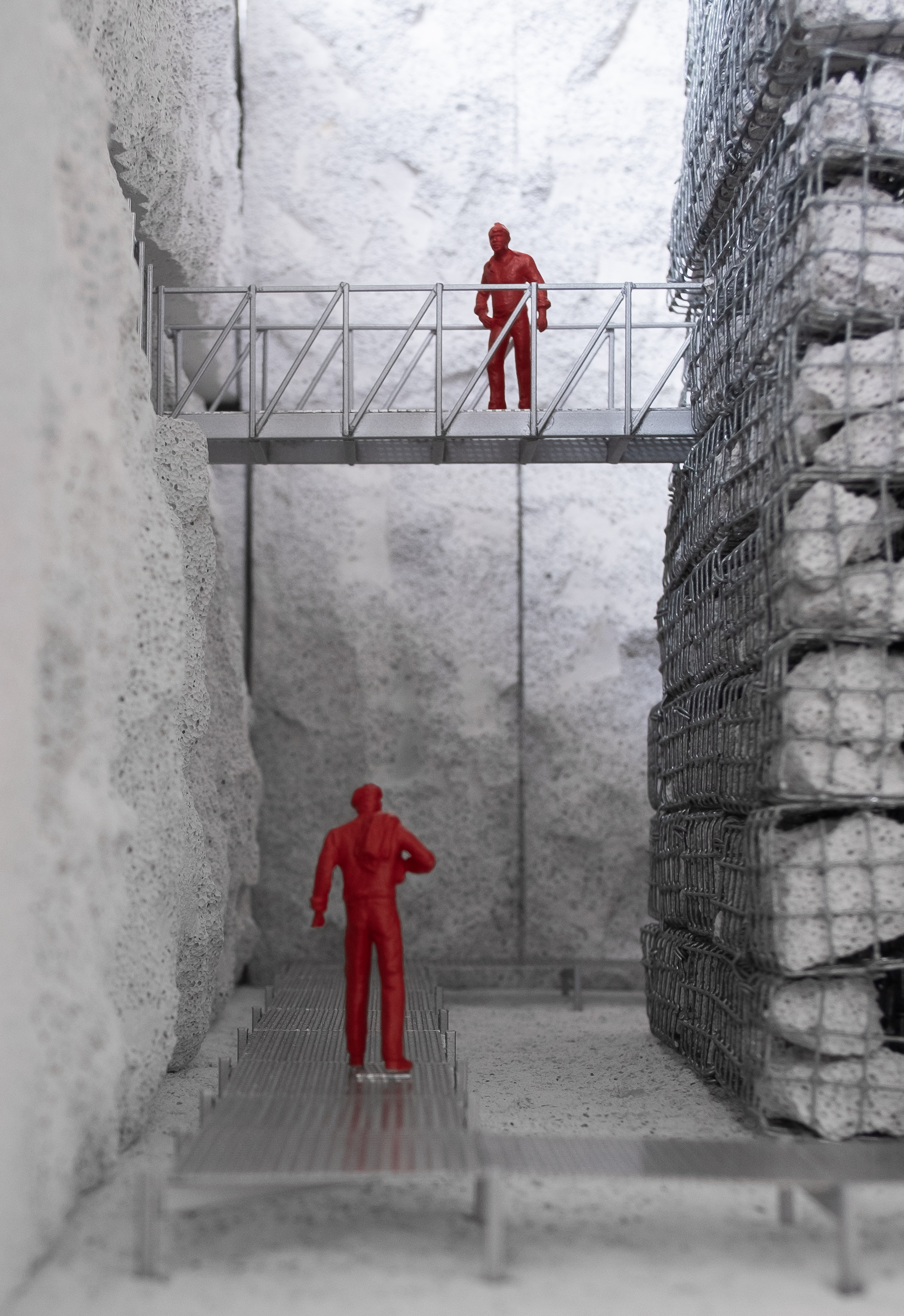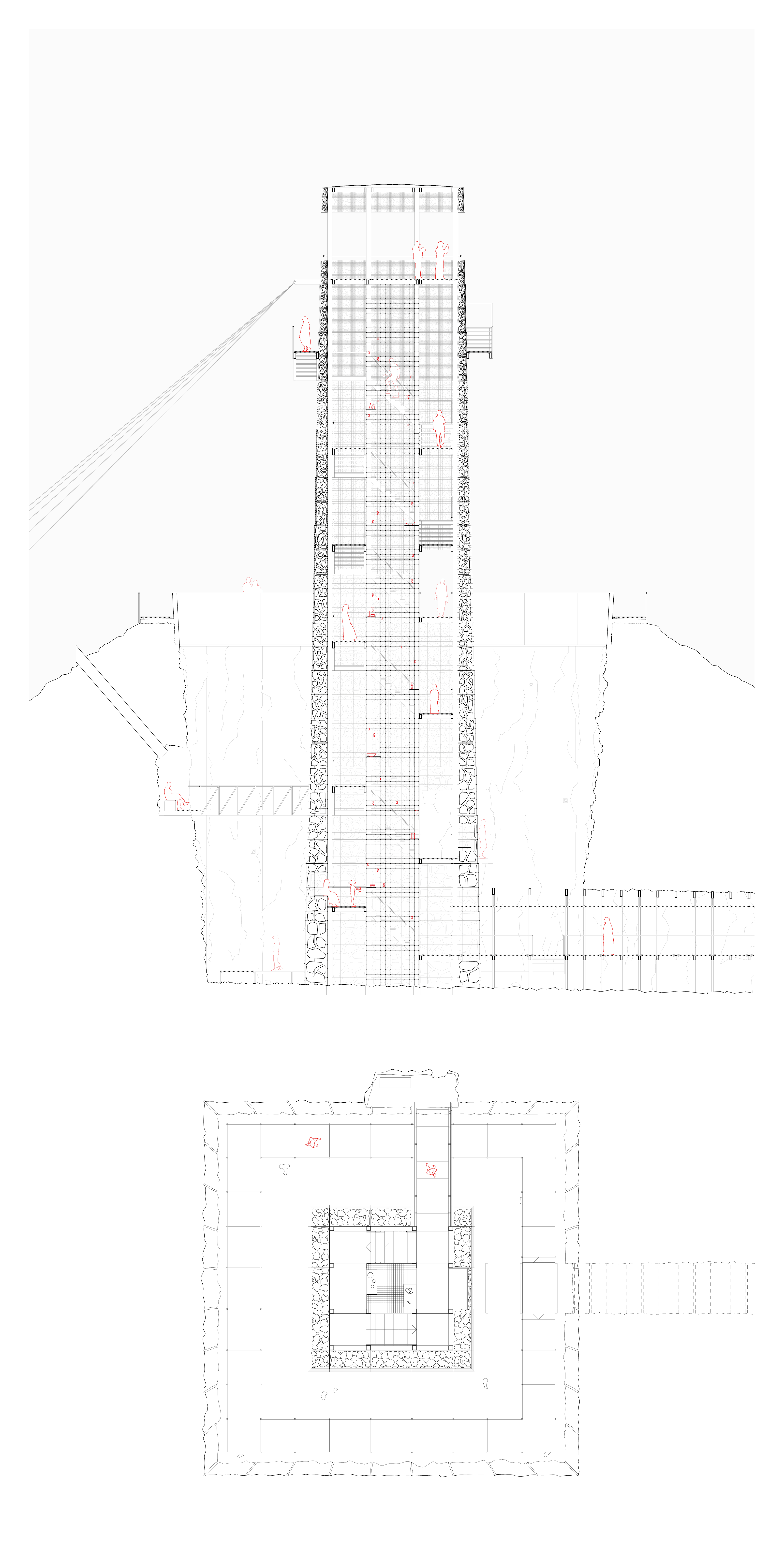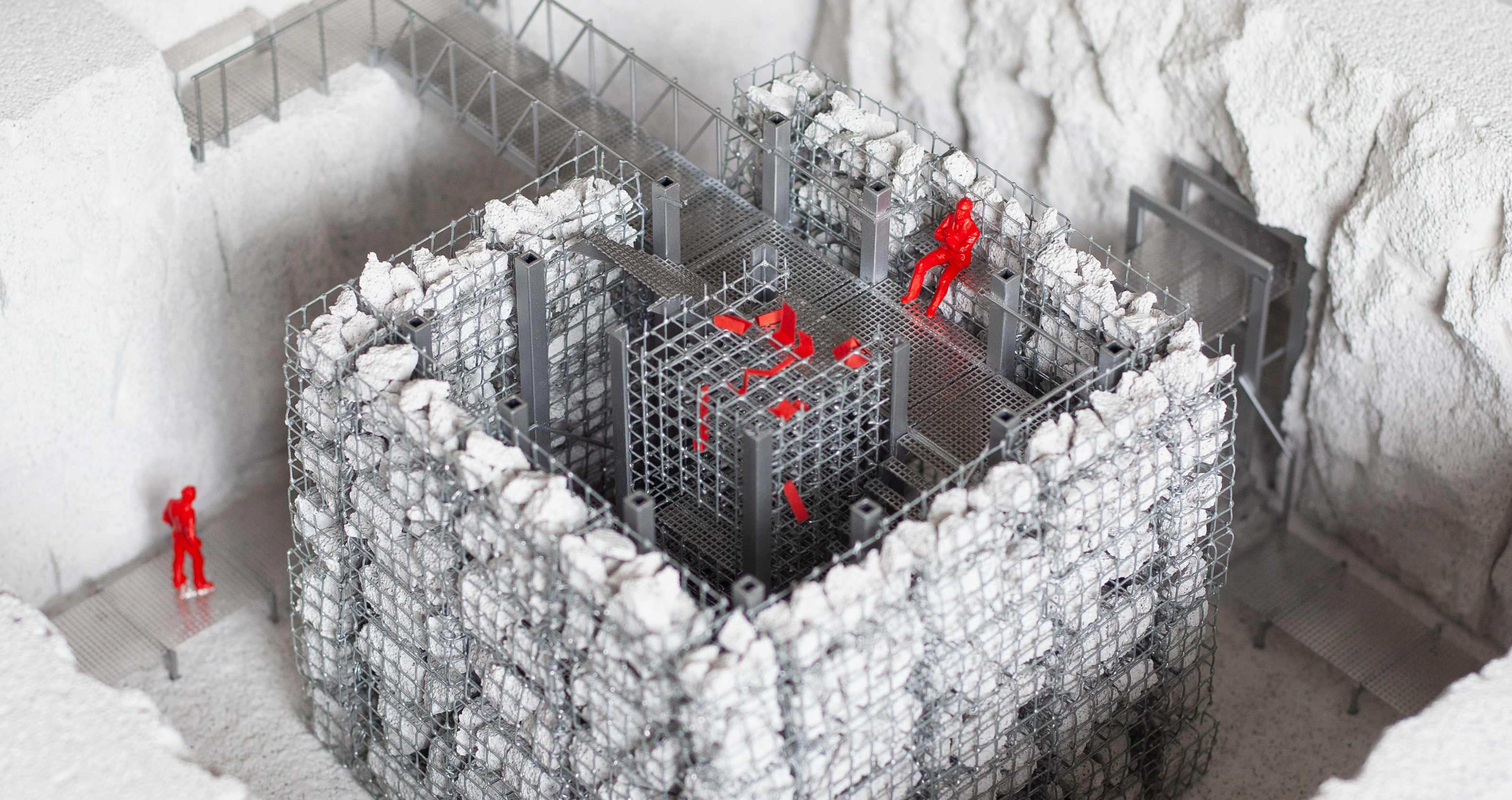REST STOP III – THE VIEW TOWER
Jesse Verdoes
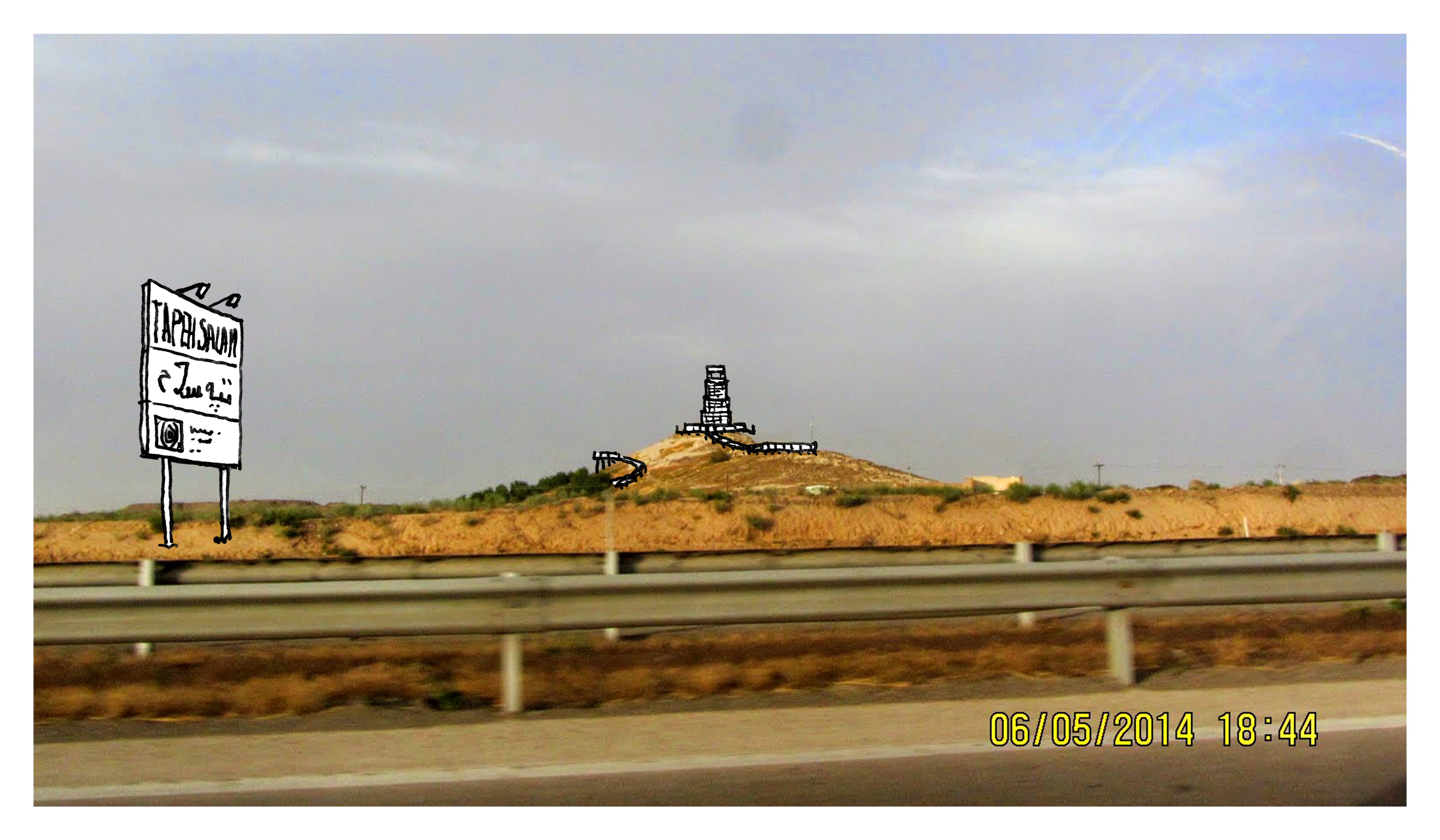
The intervention, located on a forgotten heritage site, revaluates the hill by transforming it into a new functionality. The view tower is the place where the ritual is concluded after the mourning period of 40 days. In order to reach the tower, one takes the exit from the highway and parks around the rest area, which forms a linear extension of the sightline towards the Imam Reza Shrine. A series of spatial experiences is constructed along the line, leading the visitor into the granite outcrop.
Route & Material
A metal grate pathway takes visitors inside the hill through a tunnel that ends at the base of the tower. The excavated cavity is conditioned by the thermal mass of the hill, which also keeps out the sounds of the highway. A precise and rigid steel structure contrasts with the roughness of the rock that surrounds it. The section of the rock reveals the historic layers of the granite outcrop, which can be observed from the path around the tower. Left-over stone from the excavation is crushed and organized in steel cages that form the cladding for the structure, protecting the tower’s interior space while still letting light through.
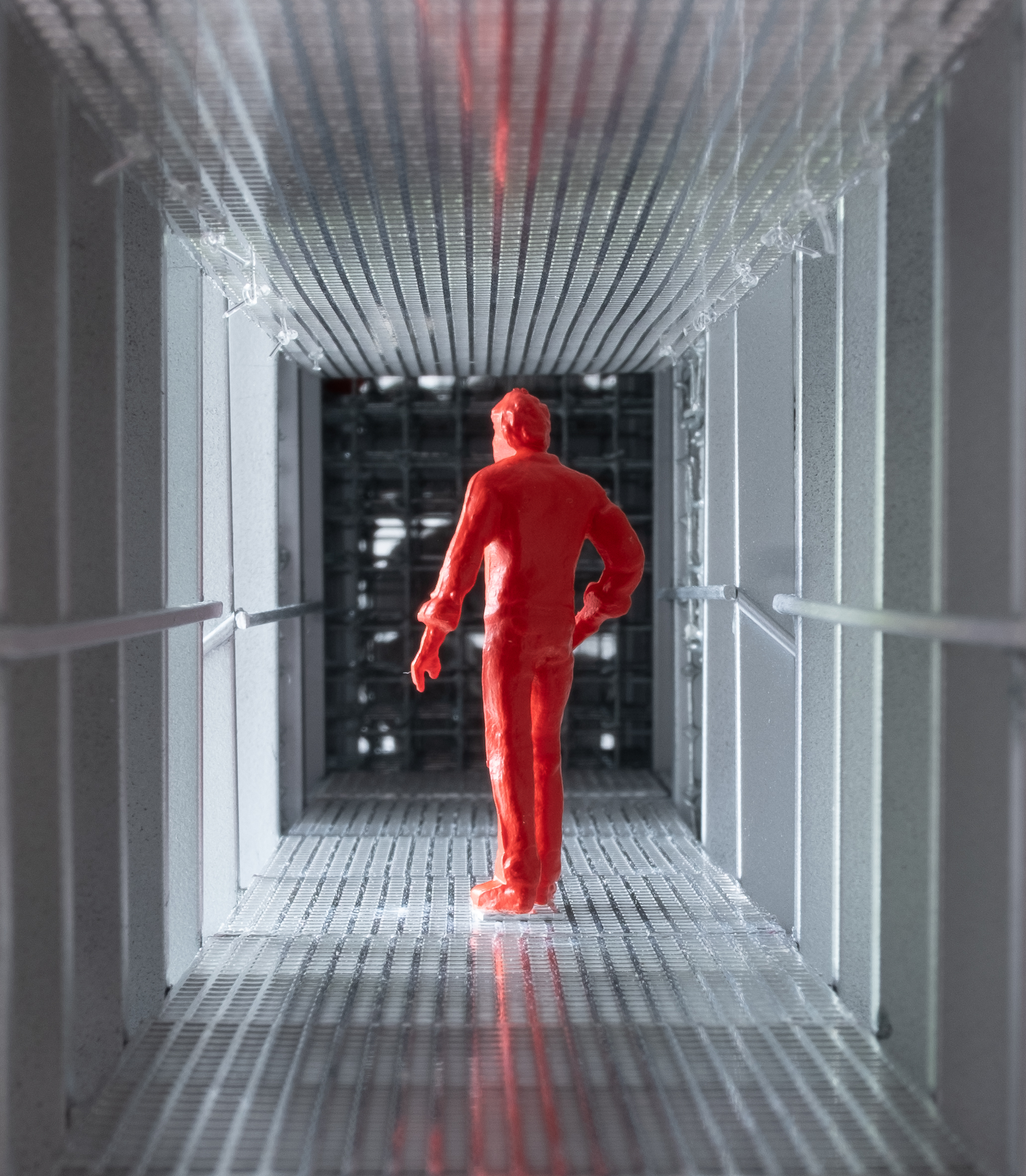
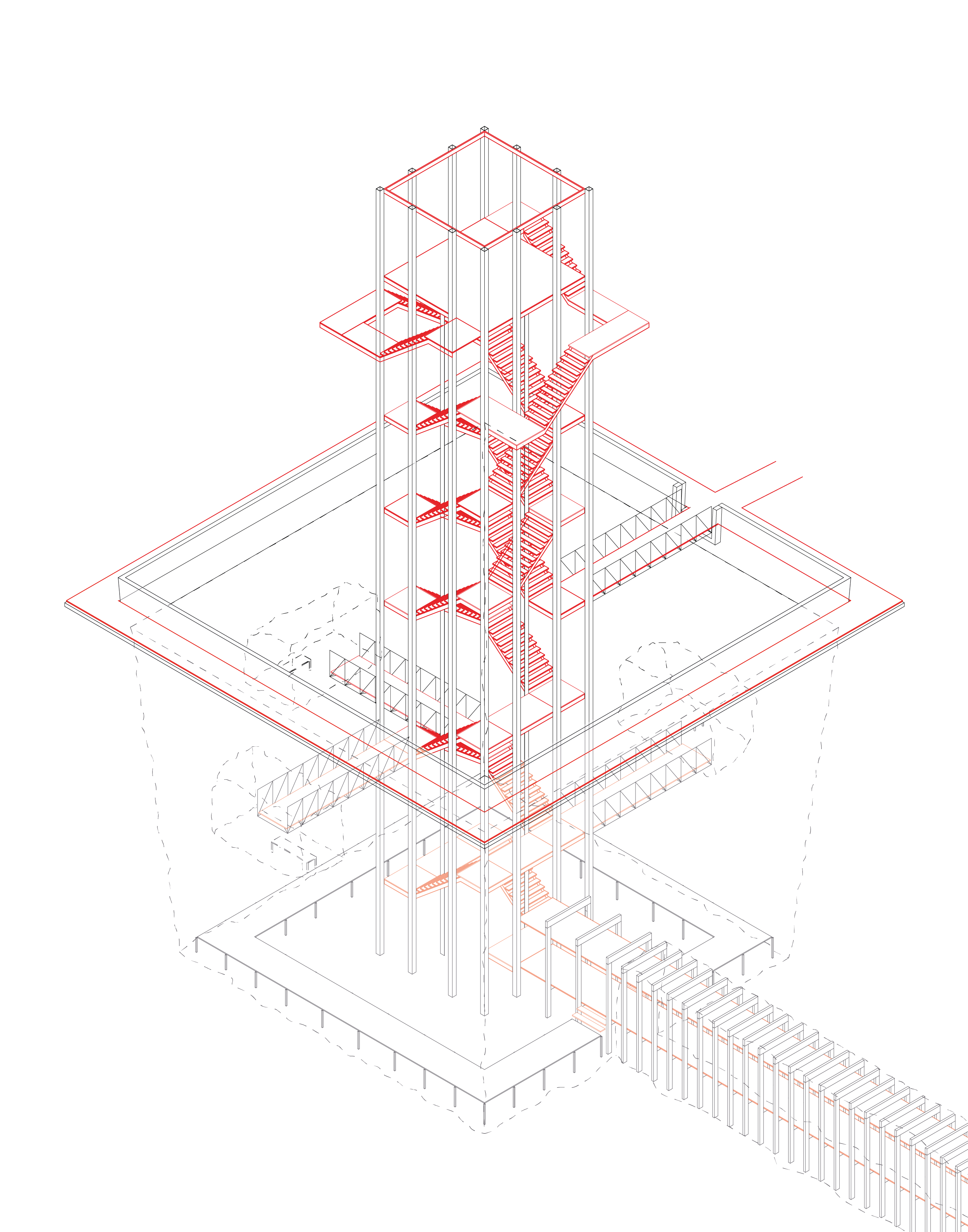
Container of Memory
The path is placed within the structural grid of the tower, leaving a gap between the facade and the metal grate floor. At specific moments, this border is surpassed, making place for seating areas within the gabion structure. From the seating, the visitor has a view on the core which can be filled by objects that people bring and leave behind as a physical act that finalizes the burial ritual. Materialized by an empty metal grid, the core contrasts with the heaviness of the stones, emphasizing the fragility of memory.
View Point
At certain points, the path extends through the gabion wall and transitions into a bridge that structurally anchors the tower in the mountain. The bridges extend to cavities in the rock wall that accommodate places for contemplation. Going up the tower, the stone size becomes smaller and lets less and less light through, resulting in a gradient of light that emphasizes the climax at the viewpoint on top.
From the viewing platform, the visitor has a panoramic view of the outskirts of the city. The parking and the path into the highlight the direction towards the shrine. In that same general direction, the visitor also has a view towards the highway system, providing a point of reflection of the ritual while simultaneously making the different places that accommodated it along the highway visible.
As the core of the tower can be filled with the artifacts visitors bring, it is the act of leaving something behind that can be seen as the crucial moment of ending the ritual. The tower is a communal container of memory that marks the territory of death as it can be seen from the highway.

